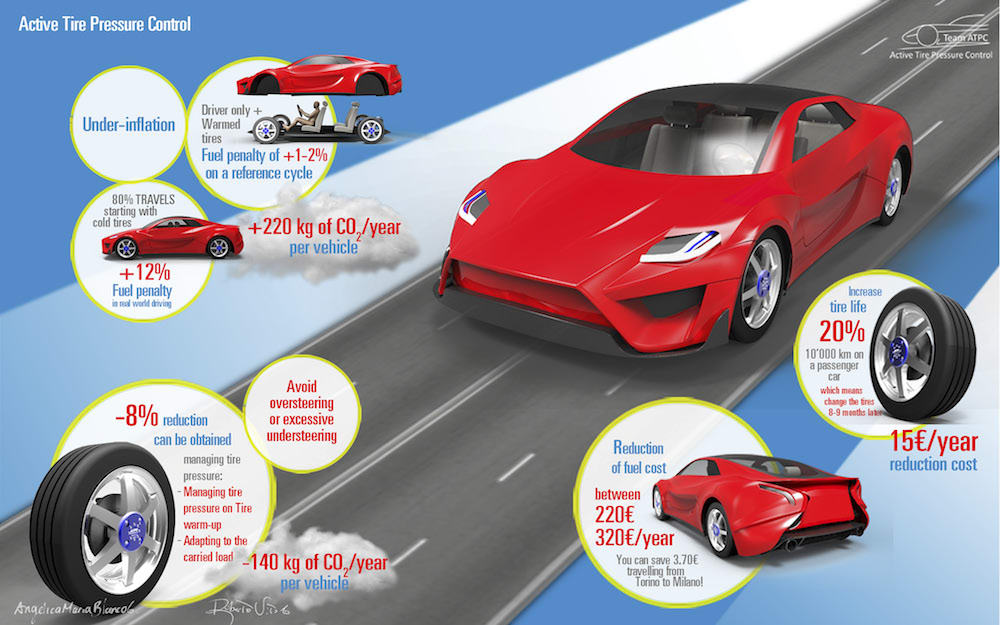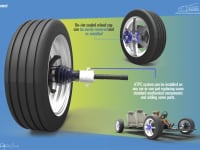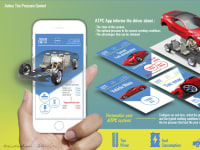Improper tire maintenance causes every year 124 fatalities, 9000 injures in US (35 deaths, 4000 injured in Europe), and common under-inflation produces a fuel penalty of 1-2% on a reference cycle (with only the driver on board and warmed-up tires). An automatic on-board system is developed to reduce fuel consumption and improve vehicle safety by means of intelligent and autonomous management of in-tire pressure during vehicle operation. The system maintains a reference inflation and/or adapts it to current conditions. It works while the vehicle is running and does not require the intervention of the driver to set the target pressure or to identify the vehicle current state. The unique design is developed specifically to fit on cars and vans, ensuring safety and easy installation and operation. An embedded software recognizes the current vehicle working condition, e.g. vehicle mass, and selects the target tire pressure as the best compromise between fuel efficiency, cost of ownership and drivability. A mobile App, or an API to be embedded in existing on-board devices, gathers data from tire pressure monitoring system (TPMS) and vehicle electronic control unit and provides the driver with proper pressure levels to be set in each tire to adapt the vehicle to the current working condition. According to the set pressure, the software informs the driver about the advantages that he/she gains using the proposed adaptation: reduction of the cost of ownership, carbon footprint, safety,…
The effect of tire pressure on fuel consumption has been assessed on a passenger car by means of simulations. If real-world conditions are considered, with 80% of the travels starting with cold tires and some travels at higher payload (passengers and luggage), fuel penalty due to improper pressure management is estimated up to 12%. This waste of fuel, which corresponds to 200 kg of CO2 per vehicle per year, can be avoided just keeping the tires to the nominal tire pressure.
An additional fuel-consumption reduction up to 8% may be obtained in real driving conditions by managing tire pressure during the tire warm-up and adapting the tire to the carried load. Additionally, computations demonstrated that adapting tire pressure to the vehicle mass may allow to keep a reference behavior during cornering (understeering/oversteering), leading to a significant benefit on drivability and therefore on safety and driving feeling. The effect of tire pressure on tire wear is also considered, which allows to set on-board a multi-objective optimization strategy.
The system is designed to be applied on any passenger car and light-duty commercial vehicle. Wheels and parts of the mechanical transmission are re-designed to allow the system integration on-board, while being interchangeable with standard ones. Therefore, the installation of the system by OEMs does not require major modifications of the standard mechanical architecture or of the vehicle assembly procedure. A sealed wheel cap, which can be easily removed to uninstall the rim, ensures the connection between the system and the tire. The system has been prototyped at Politecnico di Torino and is currently under test. Patents are pending.
Video
Like this entry?
-
About the Entrant
- Name:Roberto Vitolo
- Type of entry:teamTeam members:Roberto Vitolo, Angelica Maria Blanco Garcia
- Patent status:pending








